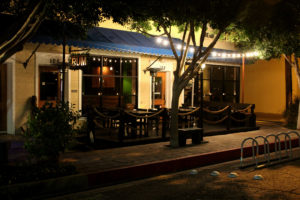 While pandemic-induced economic uncertainty impacted businesses across all sectors, the restaurant industry bared the brunt of it. Now, independent restaurant owners continue to combat ongoing industry-wide challenges, among them a prevailing – and false – perception among consumers that restaurants are already on the rebound.
While pandemic-induced economic uncertainty impacted businesses across all sectors, the restaurant industry bared the brunt of it. Now, independent restaurant owners continue to combat ongoing industry-wide challenges, among them a prevailing – and false – perception among consumers that restaurants are already on the rebound.
At one point during the pandemic’s peak, grant opportunities and funding resources were popping up for restaurant owners and workers seemingly left and right. Yet, many of these options have since dried up – leaving independent business owners facing long lines, not because of increased interest, but because ongoing issues with staffing, supply and demand, and inflation make it more difficult to get through each service.
“It’s been a perfect storm for restaurants,” said Dwayne Allen, who owns the Breadfruit and Rum Bar in Phoenix, an award-winning, island-inspired eatery he and partner Danielle Leoni closed temporarily back in 2020 – and have yet to reopen. “The industry is in a state of uncertainty – it’s on shaky grounds. We’ve been trying to be as strategic as possible about finding the right time to reopen.”
While economic complications continue to plague today’s independent restaurant owners, so, too, does a lack of support from Washington. The Restaurant Revitalization Fund, which sought to provide funding to independent restaurants to help them keep their doors open, suffered from severe underfunding and was only able to serve about a third of the independent restaurant owners who applied for relief.
Then, an effort to pass a Restaurant Revitalization Fund Replenishing Act, which would free up another
$60 billion to support the nation’s independent restaurants, failed to pass the U.S. Senate – despite the fact that more than 180,000 independent restaurants were depending on its passage for survival.
“At this point, it’s time to point fingers,” Allen said. “As professionals, we try to be partisan – but half of the government is doing what it needs to do and the other half is doing nothing. The situation could have been decidedly different for restaurants. These are the things we need to start saying out loud.”
In addition to calling out those who have the ability to help independent restaurants, but neglect to do so, Allen has other ideas for how consumers can show their support for independent restaurants – and help them reopen their doors or remain in operation.
“We need to be more intentional about the restaurants we support,” Allen said. “Independent restaurants help define the look, shape and feel of a city, and we need to give them credit for that. What’s the first thing you do when you get to a new place? We need to start supporting the restaurants and owners operating in our own neighborhoods the same way we do when visiting others.”
It’s also important for patrons to exercise patience and recognize that an empty restaurant table doesn’t necessarily mean it’s available for seating – and that restaurant owners and staff are turning tables over as fast as they can, given the limited resources they have.
“There are certain things like inflation that we can’t change at the community level,” Allen said. “But what we can do is fight this false perception that the industry is rebounding, be more intentional in where we eat, and point the finger at those who have the power to change things – but don’t.”


